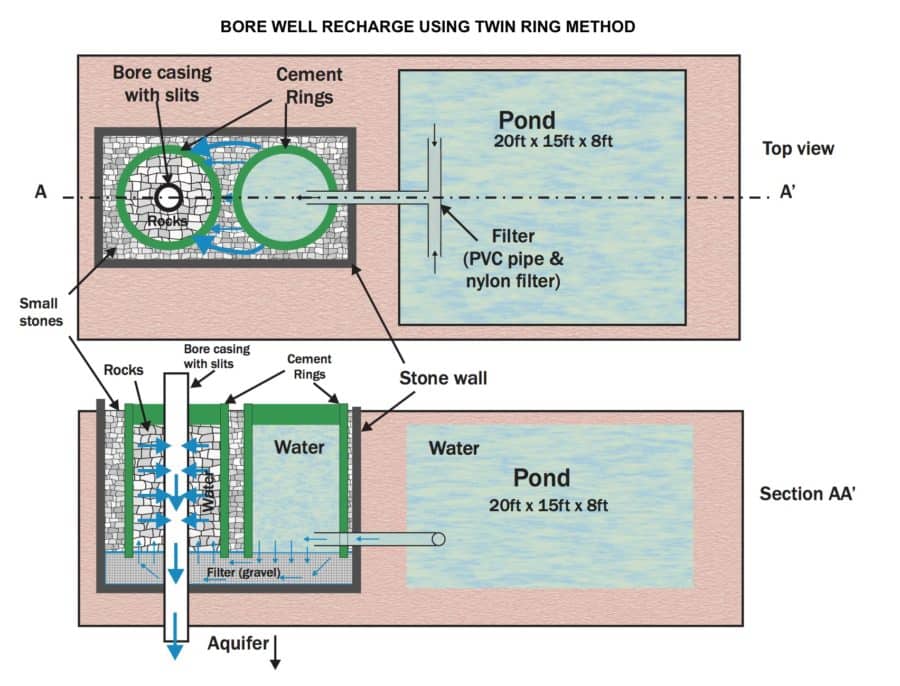Are your bore wells dried up? Our twin ring bore well recharge can bring water back to your land.
Our method of rain water harvesting through bore well recharge – will bring water back to even your dried up bore wells.
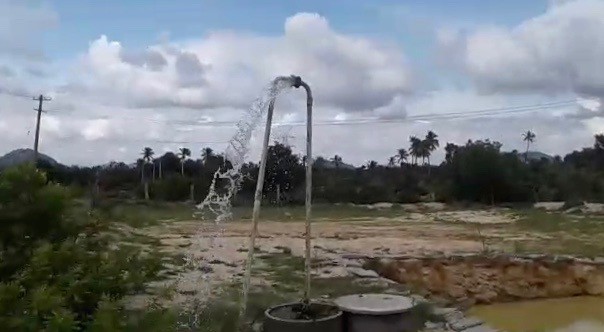
This bore well was fully dried up and now after one big rain is recharged – in Madhugiri – Tumkur District. (October 2019)
Excessive digging of new bore-wells and overuse of existing ones has resulted in severe depletion of groundwater levels rendering many bore-wells dry.
The video below explains our original method, the single ring technique. Due to difficulty and cost of obtaining sand as a filtration method, we have developed a new method called the Twin Ring Method.
Here is a diagram of the way this is constructed. For more photos of this method please click here. For full description see below.
Sankalpa Rural Development Society’s direct bore-well recharge technique combines common rainwater harvesting practices with innovative practices to replenish ground-tables and aquifers with naturally filtered rainwater.
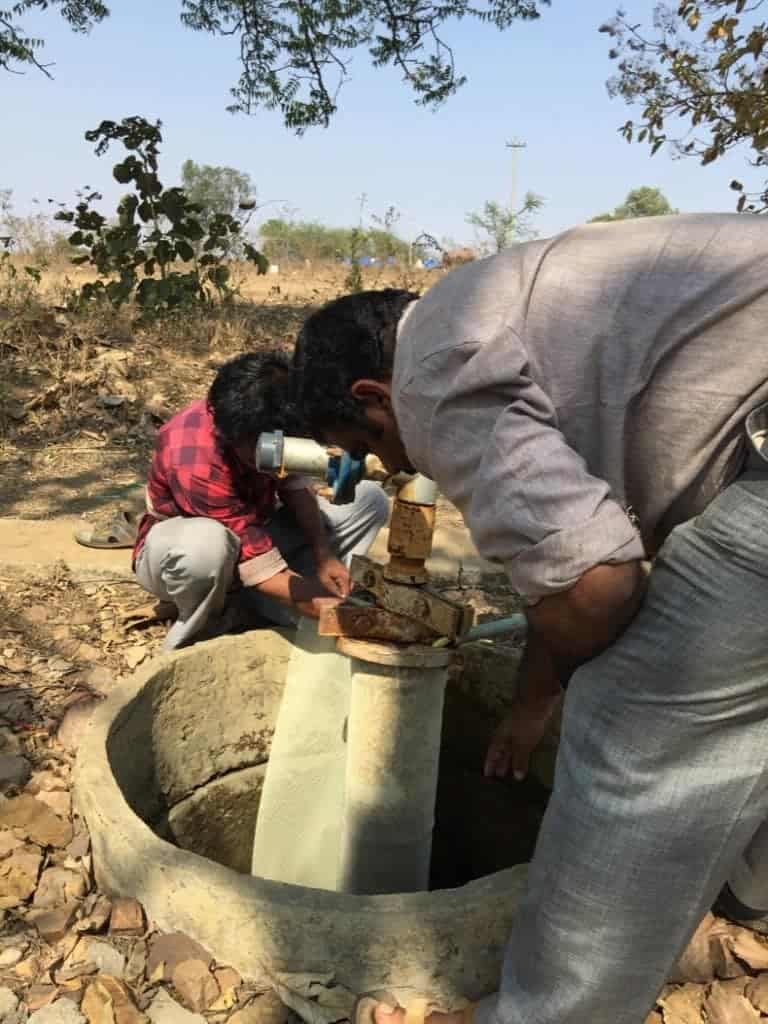

Twin Ring Method (see diagram above):
The method is simple, works well and is cost effective.
In brief the process is as follows:
- A pond – approx 20 feet x 15 feet and 8 feet deep – is constructed nearby the borewell site – in a position to gather the run off water from the monsoonal rains.
- A pit is dug around the actual borewell casing – 6 feet x 4 feet size and 8 feet deep. This work is done with JCB.
- The bottom of this pit is lined with filtration material to a depth of 2 feet – layers of 40 mm stones, 20 mm and 6 mm size.
- Next slits are cut into the borewell casing using a cutting machine, and the casing is then wrapped with nylon mesh so solids cannot enter the casing pipe.
- At this stage, 6 x 3 foot diameter cement rings are placed around the borewell casing and the spaces between them are filled with cement to seal them. This ‘false well’ is then filled with 20mm stones.
- A second ‘false well’ constructed of 6 x 3 foot diameter cement rings are placed next to the first ‘false well’ and the gaps between are filled with cement. This well is left empty. And a cement cover is placed on it to stop rubbish falling in.
- A 3 inch feeder pipe is fitted coming from the pond to a hole in the first cement ring of this empty well. This brings the water from the pond.
- During rainy season the water flows from the pond into the first empty well where it percolates down through the filtration material and subsequently up into the second well around the borewell casing. It then enters through the slits and filters down into the underlying aquifer where it is stored for the following dry season.
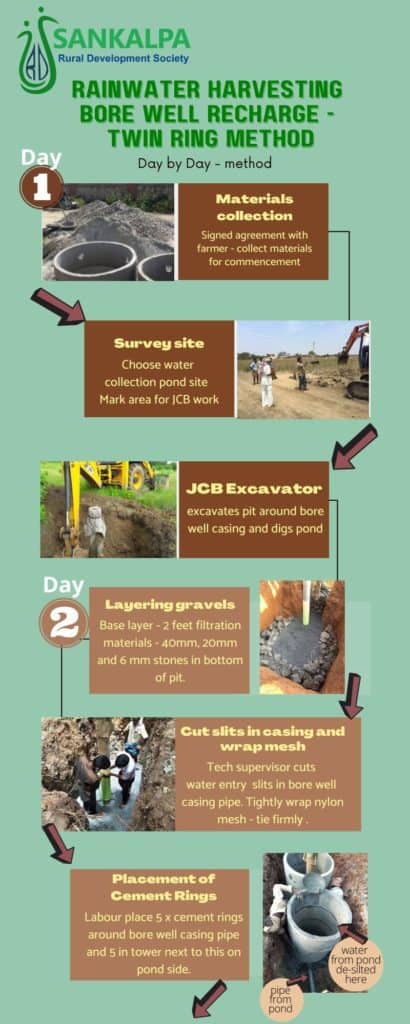
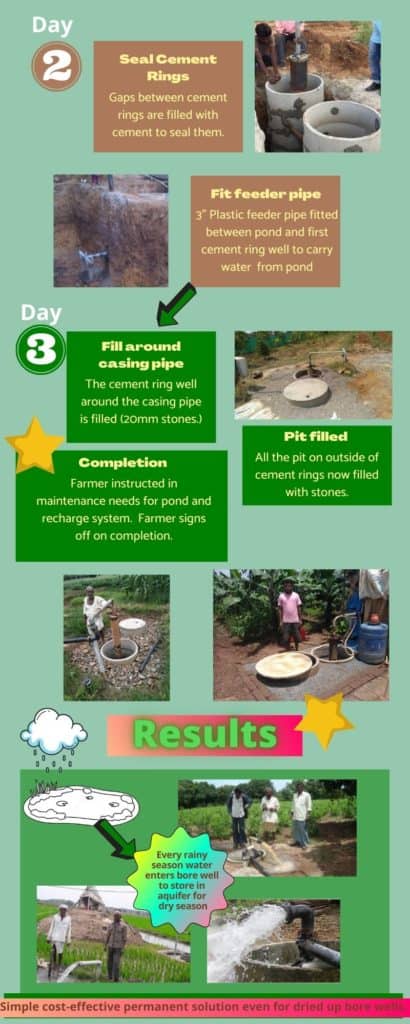
This renovation of ground water harvesting is useful for the following reasons:
Increased water-output:
Bore-wells are recharged using our technique have resulted into increased water-level in the bore wells. Even completely dried bore-wells can also be revived by proper management and utilization of rain water.
Better water-quality:
Reserving of naturally filtered rainwater into the groundwater tables results in a decrease in the proportion of impurities in the water. The bore-well’s water thus loses its hardness with time and toxic minerals such as fluoride are diminished.
The use of locally procured natural materials enables us to deliver the bore-well recharge service at an extremely low cost.
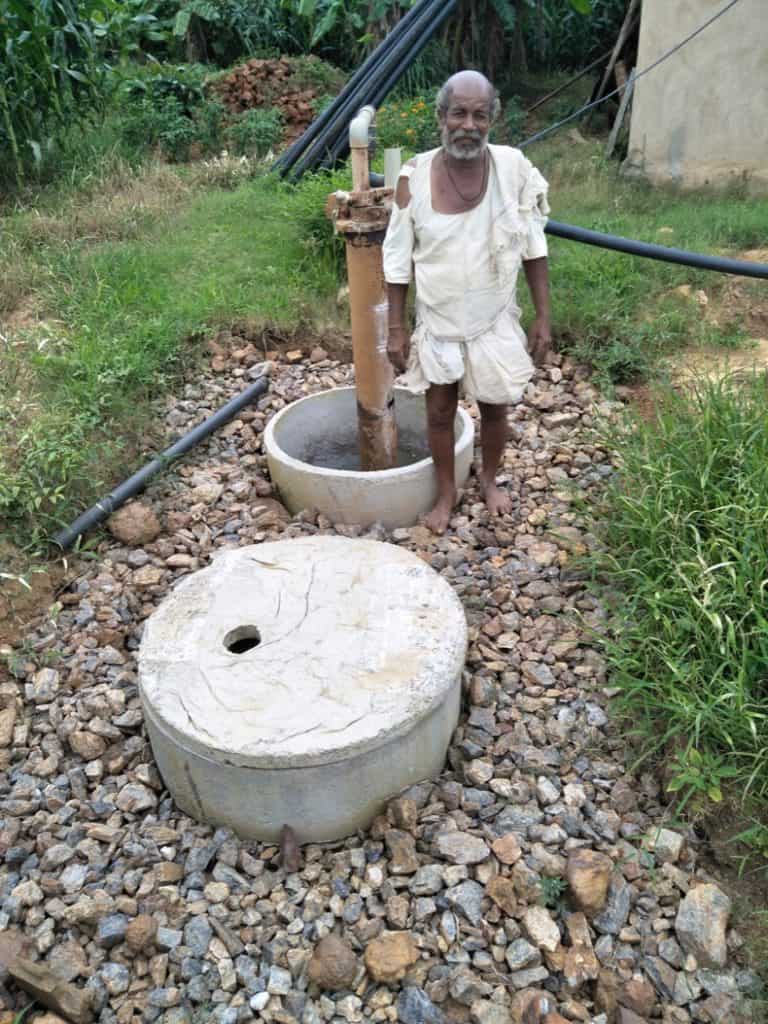
Cost-effective:
Permanent: Once recharged a bore-well never goes dry. Year after year, underground water-tables and aquifers are replenished thus keeping your bore-well up and running.
Customizable:
It doesn’t matter if you’re a farmer with your bore-well on a farm-land or if your bore-well lies on the site of an industry / farm-house / educational institute or any other urban site. Our technique can be customized to meet your needs. For more information about industrial bore well recharge and rooftop rainwater harvesting see this website.
Eco-friendly:
Apart from resolving your water-scarcity issue, our bore-well recharge technique also ensures the storage of naturally filtered rainwater in natural water-reservoirs i.e. aquifers and water-tables for use by future generations.
We must conserve and replenish the underground water storage in the aquifers for the future of our children and our children’s children. Rain water harvesting is the optimal way to do this.
Our footprint for borewell recharge projects has spanned across a decade. Recharges have been done for farmers in Karnataka, Tamil Nadu, Andhra Pradesh, Telengana, Madhya Pradesh, and Maharashtra. You may explore the projects in the map below:


